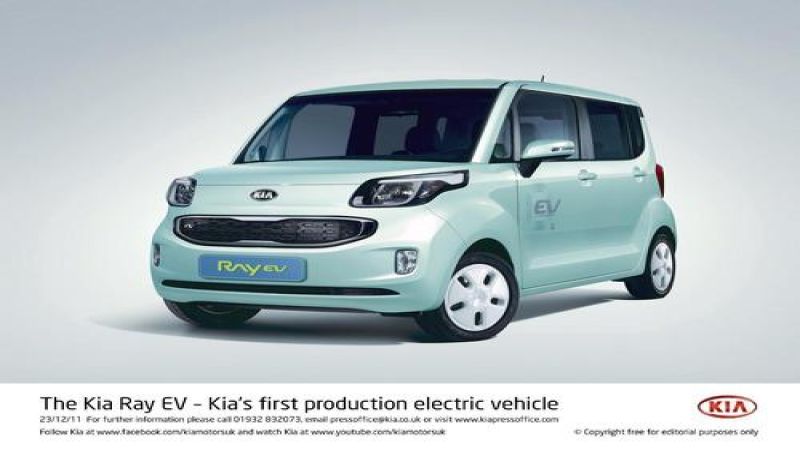The Kia Ray will be a zero-emissions car with a range about 86 miles or 139 km. It can accelerate from 0-60 mpg in 15.9 seconds and the top speed is 81 mph. (While this is bit faster than the Kia Ray CUV 1-liter gas equivalent cousin, I am fairly sure the Ray will not be the envy of any gearhaeads.)
The front-wheel drive Ray EV is powered by a 50kW electric motor and a high-capacity 16.4 kWh lithium ion polymer battery pack that is engineered for a 10-year life cycle and skilfully packaged under the rear seat and cabin floor. Kia is claiming the electric motor achieves 93% efficiency, which would be the best in the segment.
Recharging time on the Ray takes 6 hours using a 220v household supply, but it also ha a 25 minute fast-charging option and mode.
The Ray EV’s automatic transmission offers the driver a choice of two modes while in ‘D’ drive. ‘E’ (or ‘eco’) mode optimizes the delivery of the motor’s torque to achieve minimum battery consumption and maximum driving range. ‘B’ (or ‘brake’) mode can be selected when driving downhill on highways and on mountain roads to maximize braking power.
The on-board charger, inverter, high-low voltage converter and EV-specific VCU (vehicle control unit) each features advances over previous equipment.
The lithium ion polymer battery’s cell is supposed an advancement for car batteries. The weight has been reduced by 13% and its energy density increased by 15% compared to competitors’ systems.
The Kia Ray is also equipped with a new type of regenerative braking system featuring an Active Hydraulic Booster that utilizes the electric motor, thus create hydraulic pressure for the brake system. The result is consistent brake pedal force throughout a wide variety of driving conditions and the ability to harvest excess energy and use it to recharge the car’s battery.
Safety systems on the Kia Ray include six standard air-bags, electronic stability features – VDC (Vehicle Dynamics Control) and HAC (Hill Assist Control, to prevent roll-back.)
Since electric vehicles generate little engine noise, which can be a potential problem with pedestrians being unaware of the approaching car, Kia has developed VESS (Virtual Engine Sound System). When the Kia Ray is driven at speeds below 20 kph (12 mph) this system delivers a mixture of recorded gasoline engine noises, which are also emitted whenever the car is backing up. Kia hopes this prevent and injury to pedestrians who might not hear a EV coming there way.
An interesting fact about the Kia Ray is that it will be built on the same production line as its gas powered cousin, the Kia Ray CUV. This is a first for global EV manufacturers and is a testament to the ingenuity of Korean engineers.
Currently there are 500 slow/fast recharge stations in Korea, and the government plans to increase that figure to 3,100 stations by the end of 2012.
Kia is planning to manufacture 2,500 units of the Ray EV, which will be provided to government departments and public offices. This shows Kia's commitment to taking the next step in transportation for Korea and the world.
Please contact Adam Yamada-Hanff – [email protected] – for comments, questions, or topics. You can also follow him on Twitter @AdamsAutoAdvice
Kia News
KIA Brings LPGA Star, Golf-themed Soul to 2011 LA Auto Show
Kia shows commitment to Zero Emission auto technologies
Kia to build third auto plant in China












Comments
"...This is a first for
Permalink
"...This is a first for global EV manufacturers and is a testament to the ingenuity of Korean engineers."
I don`t get this part...
It stands to reason if Kia is
Permalink
In reply to "...This is a first for by FA (not verified)
It stands to reason if Kia is the first to figure out how to do this, then they have some smart engineers.
Other manufacturers that
Permalink
In reply to "...This is a first for by FA (not verified)
Other manufacturers that produce EVs have to build them on a dedicated production line. Kia's ability to build a traditional gas powered vehicle and a full Ev on the same production line allows for more flexibility in production as demand changes.